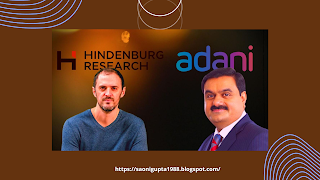Sadako Sasaki: A Symbol of Hope and Peace
Introduction
Sadako Sasaki, a young girl from Hiroshima, Japan, became an enduring symbol of resilience, hope, and peace in the aftermath of World War II. Born on January 7, 1943, Sadako was only two years old when the atomic bomb was dropped on her city. Despite surviving the initial blast, she developed radiation-induced leukemia, a disease that would shape her life and legacy. Sadako's story has touched millions of people around the world and continues to inspire efforts for peace and nuclear disarmament. In this blog, I will delve into the life, struggles, and impact of Sadako Sasaki, highlighting her indomitable spirit and the message she left behind.
I. Early Life and Tragedy
Sadako Sasaki was born in Hiroshima, Japan, during a time of war and immense suffering. Her family had four kids, with her being the youngest. Her father, Shigeo Sasaki, was a carpenter, and her mother, Fumiko Sasaki, was a homemaker. Sadako grew up in a small house in the city, which was located only a few kilometers from the center of Hiroshima.
Sadako was an energetic and active child who loved to play outside with her friends. She enjoyed running, jumping, and playing games with her siblings and neighbors. She was also a talented athlete and participated in track and field competitions at school.
However, her childhood was shattered on August 6, 1945, when, when Sadako was just two years old, the United States dropped an atomic bomb, code-named "Little Boy," which devastated Hiroshima, causing unprecedented destruction and loss of life.
The bomb destroyed much of the city and killed over 140,000 people, including many of Sadako's relatives and friends. Sadako miraculously survived the initial blast, and although she was too young to remember the bombing, it had a profound impact on her life and the lives of everyone around her.
II. The Unfolding Tragedy
In 1954, when Sadako was 11 years old, she began to experience symptoms of radiation sickness. She developed lumps on her neck and behind her ears and was diagnosed with leukemia, a type of cancer caused by exposure to radiation. At the time, leukemia was a fatal disease, and there was no known cure.
This cruel manifestation of the bomb's aftermath brought immense pain and suffering to Sadako's life. Hospitalized in February 1955 in Hiroshima, Sadako faced a daunting battle against the disease, clinging to a slender hope for survival. She spent much of her time in the hospital bed, surrounded by her family and friends, who visited her regularly.
III. The Thousand Cranes
During her time in the hospital, Sadako learned about the ancient Japanese legend that folding a thousand paper cranes could grant a wish to the gods. Determined to make a wish for her recovery and the well-being of others, Sadako embarked on the challenging task of folding a thousand origami cranes.
Her room in the hospital became a sanctuary for her dreams, a place where hope transcended the harsh reality of her illness. She began folding cranes using any paper she could find, including medicine wrappers and old admission tickets. Her family and friends helped her by providing paper and teaching her different origami techniques.
Sadako worked tirelessly on her cranes, folding them with great care and precision. She folded them while lying in her hospital bed, and her friends and family helped her by hanging them from the ceiling and walls of her room. Sadako's determination and positive attitude inspired everyone who knew her.
IV. Sadako's Wish and Death
Sadako was determined to fold 1,000 paper cranes, but her illness made it increasingly difficult for her to complete the task. She became weaker and weaker, and her family and friends could see that her condition was deteriorating rapidly.
Sadly, Sadako was never able to finish folding all 1,000 cranes. She passed away when she was 12 years old, on October 25, 1955. She had folded over 600 cranes by that time. Her death was a great loss to her family and friends, as well as to all those who had been touched by her story.
V. Sadako's Legacy
After Sadako's death, her classmates and friends decided to complete her task of folding 1,000 paper cranes. They folded cranes in her memory and sent them to the Hiroshima Peace Memorial Park, created by the Children's Peace Monument, where Sadako's statue stands today. The statue depicts Sadako holding a golden crane, symbolizing her wish for peace and a world free from nuclear weapons.
Sadako's story gained worldwide attention, and her folded paper cranes became a symbol of peace and a call to end nuclear weapons. The power of her wish and her determination to fold the cranes resonated with people from different cultures and backgrounds. Inspired by Sadako's story, children and adults from various countries began folding paper cranes and sending them to Hiroshima as a symbol of peace and solidarity.
In 1958, a children's book called "Sadako and the Thousand Paper Cranes" was published, written by Eleanor Coerr. The book told Sadako's story and introduced her to a global audience. It became widely read and translated into many languages, further spreading the message of peace and the importance of nuclear disarmament.
Her legacy also extends to initiatives such as the Sadako Peace Project, which aims to collect 1,000 origami cranes from every country in the world to create a global monument of peace. This project serves as a reminder that peace is a shared responsibility and that every individual can contribute to creating a better world.
Conclusion
Sadako Sasaki's life may have been cut short by the atom bomb disease, but her spirit and message live on. Her story continues to inspire people of all ages and backgrounds to work towards a peaceful world free from the horrors of war and nuclear weapons. Through her thousand cranes and unwavering hope, Sadako touched the hearts of millions, becoming an iconic symbol of resilience and a call for peace. As we remember Sadako's journey, let us carry her message forward, ensuring that her legacy remains a guiding light for generations to come.
.png)
.png)





Very good 👍
ReplyDeleteThank you so much !!! 😊
Delete